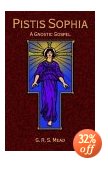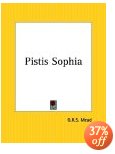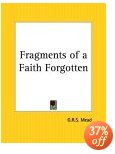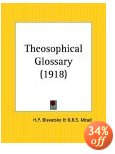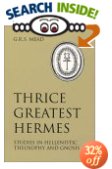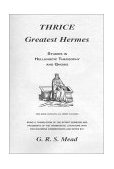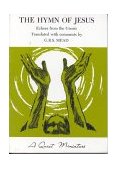 |
||||||||||||||||||
|
|
||||||||||||||||||
| Who is G.R.S. Mead? | ||||||||||||||||||
|
|
||||||||||||||||||
|
He was a prolific writer contributing much to the study of hermetics, christianity, gnosticism and world religions. A Hermeticist and scholar was one of the truly great researchers into arcane wisdom. At a time when the esoteric tended to mean little more than table tapping and mysterious phenomena, he was translating into English the gems of Neoplatonic and Egyptian philosophy. In works such as Thrice Greatest Hermes, The Doctrine of the Subtle Body, Orpheus, and Fragments of a Faith Forgotten, he almost single handedly reassembled the lost esoteric tradition of classical Athens and Alexandria and Gnosticism in general. Mead was at one time the European General Secretary of the Theosophical Society.
|
|||||||||||||||||
|
|
||||||||||||||||||
|
|
||||||||||||||||||
|
|
||||||||||||||||||
|
||||||||||||||||||
|
|
||||||||||||||||||
| See Kessinger below for more info. I am not familiar with the Paul Tice edition (above) although I have ordered it for review. I have the reprint copy listed next. It is complete. Jessika
P.S. Pistis Sophia from Kessinger most certainly read by Father Paul. |
||||||||||||||||||
|
|
||||||||||||||||||
|
||||||||||||||||||
|
Some short sketches among the Gnostics, mainly of the first two centuries-a contribution to the study of Christian Origins based on the most recently discovered materials. "I have written so that the man of one language only may read from the first to the last page, without being forced to regret his ignorance of other tongues; for I believe that the subject is of profoundly human interest, and not one of merely academical importance...my main object has been to hand on what the earliest Christian philosophers and teachers wrote and thought. They seem to me to have written many beautiful things, and I, for my part, have learned through them to sense the work of the Great Master in a totally new light." Contents: Prolegomena; Some Rough Outlines of the Background of the Gnosis; General And Gnostic Christianity; The Gnosis According to Its Foes; Some Gnostic Fragments Recovered from the Polemical Writings of the Church Fathers; Some Traces of the Gnosis in the Uncanonical Acts; The Gnosis According to Its Friends; Bibliographies. I highly recommend this one Fragments of a Faith Forgotten . An extensive bibliography of the period and a glimpse of Mead's world is worth the price alone. Surely this work was a foundation for the further search of others. Jessika |
||||||||||||||||||
|
There is also an earlier version with no names listed as author. I recommend this one here by Blavatsky and Mead. Jessika |
||||||||||||||||||
|
||||||||||||||||||
|
||||||||||||||||||
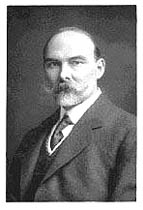 George Robert Stowe Mead (G. R. S. Mead), wrote the first English translation of the Pistis Sophia, the most influential of all Gnostic studies before the discovery of the Nag Hammadi library.
George Robert Stowe Mead (G. R. S. Mead), wrote the first English translation of the Pistis Sophia, the most influential of all Gnostic studies before the discovery of the Nag Hammadi library. 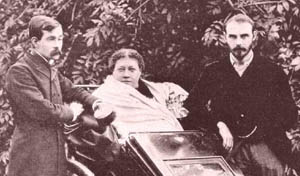 A young George Robert Stowe Mead is pictured on the far right. He is accompanied by James Pryse. The two men are escorting the famous Madame Helena Petrovna Blavatsky. Mead became a member of Blavatsky's Theosophical Society in 1884. He abandonded his teaching profession 1889 to be Blavatsky's private secretary. He served in this position for almost three years until Blavatsky's death in 1891. He worked as an assistant editor to Blavatsky's monthy magazine, Lucifer, which Mead renamed The Theosophical Review after taking over as its editor. Mead was appointed General Secretary of the European division of the society but resigned from the position in 1897. He was also offered the presidency following the death of the co-founder of the society. Mead turned this position down as well because he felt the need to pursue his own studies.
A young George Robert Stowe Mead is pictured on the far right. He is accompanied by James Pryse. The two men are escorting the famous Madame Helena Petrovna Blavatsky. Mead became a member of Blavatsky's Theosophical Society in 1884. He abandonded his teaching profession 1889 to be Blavatsky's private secretary. He served in this position for almost three years until Blavatsky's death in 1891. He worked as an assistant editor to Blavatsky's monthy magazine, Lucifer, which Mead renamed The Theosophical Review after taking over as its editor. Mead was appointed General Secretary of the European division of the society but resigned from the position in 1897. He was also offered the presidency following the death of the co-founder of the society. Mead turned this position down as well because he felt the need to pursue his own studies.

